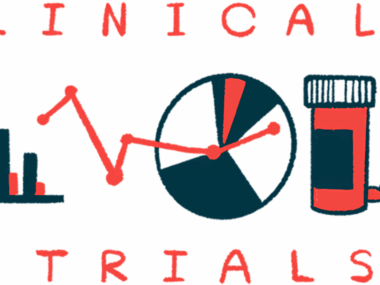Copaxone reduces pediatric MS relapses by threefold versus Avonex
Clinical trial also finds high-efficacy treatment may be preferable
Written by |

For children and adolescents with multiple sclerosis (MS), receiving treatment with Copaxone (glatiramer acetate) or its generic formulations may reduce relapses by nearly threefold compared with Avonex (interferon beta-1a), according to data from a clinical trial.
However, nearly half of patients on Copaxone and one-third of those on Avonex switched to a high-efficacy treatment due to only partial control of the disease, suggesting that, as in adults, starting high-efficacy treatment early may be preferable.
The study, “A multicentre, prospective, randomized, open-label pragmatic trial to compare the effectiveness and safety of interferon beta-1a and glatiramer-acetate in paediatric patients affected by multiple sclerosis,” was published in Neurological Sciences.
Pediatric patients usually have more active inflammation compared to adults
MS occurs when the immune system launches an inflammatory attack that damages the myelin sheath covering the nerve fibers in the brain and spinal cord, causing a range of symptoms. While it mostly develops in early adulthood, MS can also manifest during childhood or adolescence.
Compared with adults, pediatric patients usually have more active inflammation and more frequent relapses, and they reach certain disability milestones such as needing a wheelchair at a younger age. However, few studies have looked at how well approved disease-modifying treatments (DMTs) work for pediatric-onset MS (POMS) or which is the most effective option.
To learn more, a group of researchers in Italy conducted a Phase 3b study (EudraCT 2017–005129-18) where they randomly assigned 30 children and adolescents to receive either daily subcutaneous (under-the-skin) injections of Teva Pharmaceuticals’ Copaxone or weekly intramuscular (into-the-muscle) injections of Biogen’s Avonex.
While more DMTs have been approved for children and adolescents with MS in recent years, these were the only two drugs approved for this indication in 2018, when the trial was launched.
Nearly half of MS patients on Copaxone switched to high-efficacy treatment
On average, patients in both groups were about the same age (15.8 for the Copaxone group vs. 14.7 years for the Avonex group) and had been diagnosed with relapsing-remitting MS for about the same duration (1.7 vs. 2.9 years). They had not received any previous therapy before enrolling, and were treated in the trial for 96 weeks, or nearly two years.
The main goal was to determine the proportion of patients who were free from new or enlarging brain lesions, which indicate areas of damage to the myelin sheath, on MRI scans. Results showed a similar proportion of patients in both groups — about one-third — remained free of such lesions.
However, the median annualized relapse rate — a measure of the number of relapses per person per year — was significantly lower in patients treated with Copaxone versus Avonex (0.20 vs. 0.57). The time to a first relapse also tended to be longer with Copaxone, but the difference was not significant.
While both treatments were equally safe, with no serious or unexpected side effects being reported during the trial, 46.7% of patients on Copaxone and 33.3% of those on Avonex switched to a high-efficacy treatment after a median of 14 months. This occurred “due to partial control of the disease activity (occurrence of relapse or new or newly enlarging [lesions] on brain MRI),” the researchers wrote.
This suggests that “an early administration of [high-efficacy treatment] may be a more favourable approach to the treatment of POMS, as in adult-onset MS,” they concluded.
This has been also demonstrated in observational studies, overall indicating that an early start of high-efficacy treatment may help POMS patients “achieve the greatest benefit in reducing the risk of disability worsening.”







